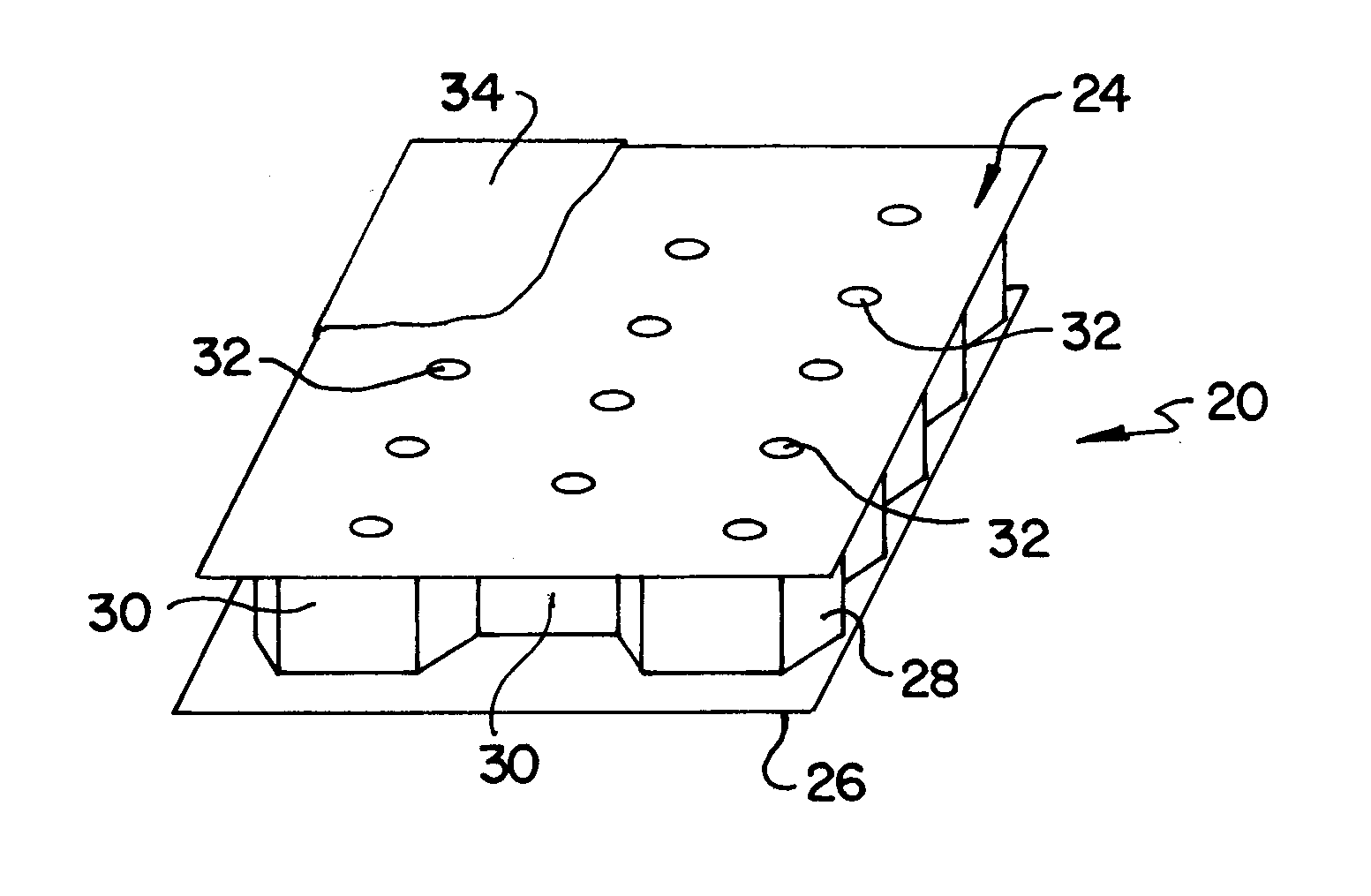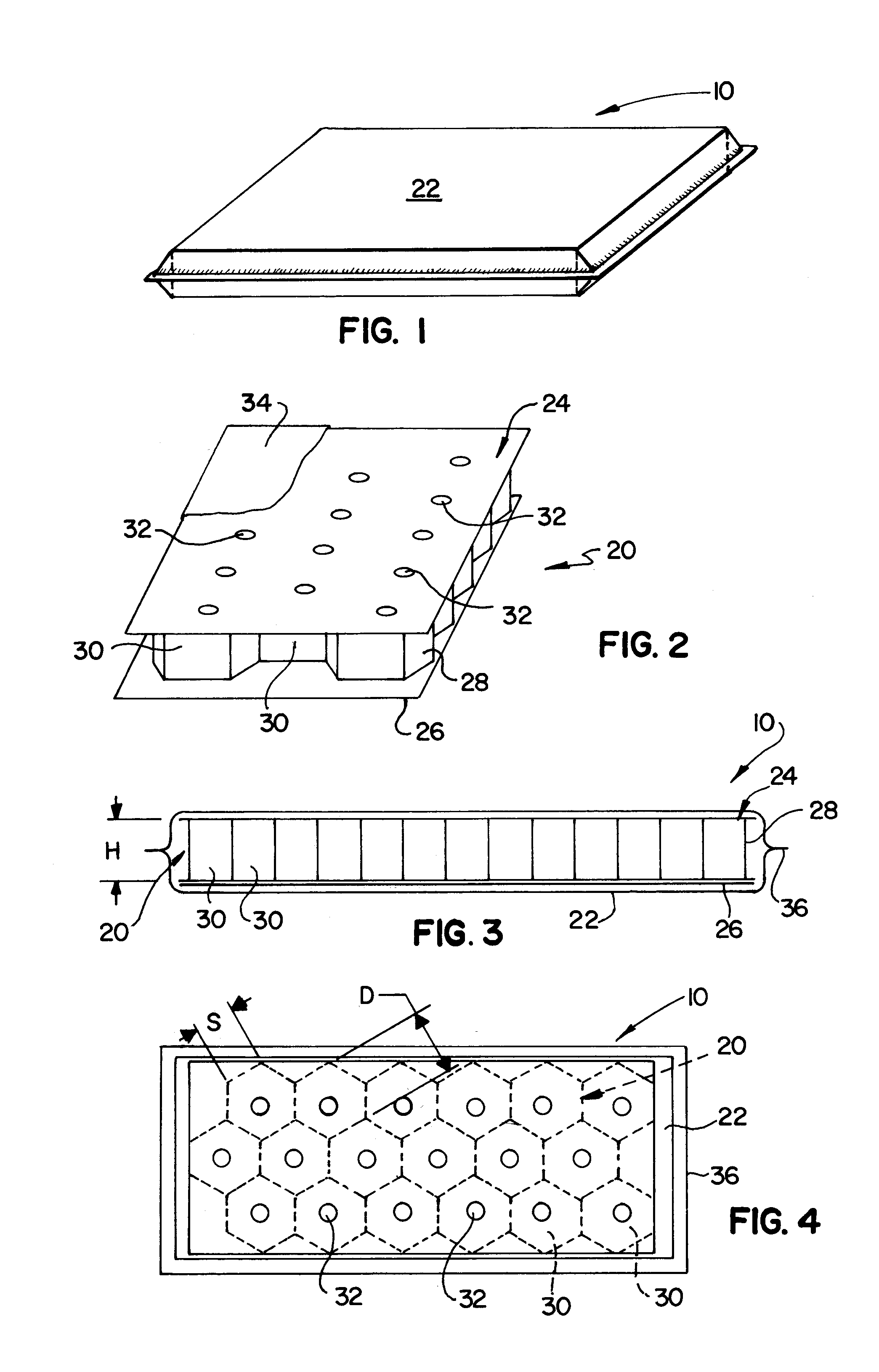Vacuum insulation panel
a technology of vacuum insulation panel and vacuum heat exchanger, which is applied in the direction of domestic cooling apparatus, lighting and heating apparatus, transportation and packaging, etc., can solve the problems of increasing the cost of the end product, increasing the cost of the known type of insulating panel, and generally being much more expensive at the initial cost, and achieves the effect of low cos
- Summary
- Abstract
- Description
- Claims
- Application Information
AI Technical Summary
Benefits of technology
Problems solved by technology
Method used
Image
Examples
Embodiment Construction
[0020]Turning now to the figures, various embodiments of the present invention will be described. In particular, FIG. 1 is a top perspective view of one embodiment of a vacuum insulation panel 10 of the present invention; FIG. 2 is a schematic perspective view of the core 20 of the panel 10 of FIG. 1, shown without an outer shell; FIG. 3 is a schematic cross-sectional view of the panel 10 of FIG. 1; and FIG. 4 is a schematic top view of the panel 10 of FIG. 1.
[0021]Briefly, embodiments of the present vacuum insulation panel include two main parts: a core and an outer shell. FIG. 1 shows one example of an embodiment of such a panel 10 in which a vacuum core is encased within an outer shell 22. As described in detail below, the core 20 (FIG. 2) includes a plurality of cells that have been evacuated through a vacuum process, and the outer shell 22 is provided to maintain the vacuum situation within the core. One of the purposes of the core 20 is to prevent the outer shell 22 from colla...
PUM
 Login to View More
Login to View More Abstract
Description
Claims
Application Information
 Login to View More
Login to View More - R&D
- Intellectual Property
- Life Sciences
- Materials
- Tech Scout
- Unparalleled Data Quality
- Higher Quality Content
- 60% Fewer Hallucinations
Browse by: Latest US Patents, China's latest patents, Technical Efficacy Thesaurus, Application Domain, Technology Topic, Popular Technical Reports.
© 2025 PatSnap. All rights reserved.Legal|Privacy policy|Modern Slavery Act Transparency Statement|Sitemap|About US| Contact US: help@patsnap.com



